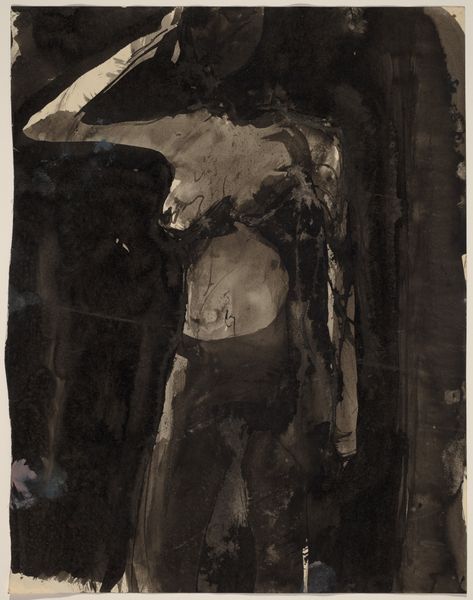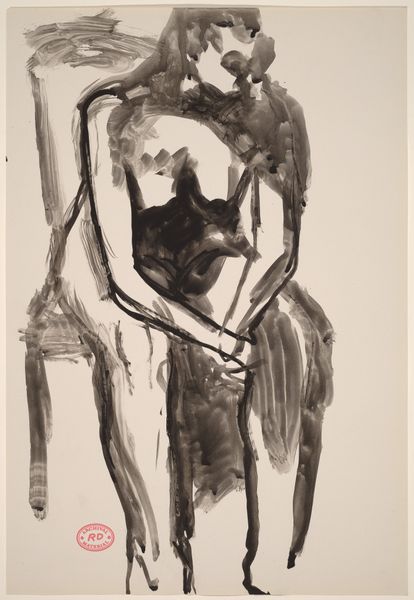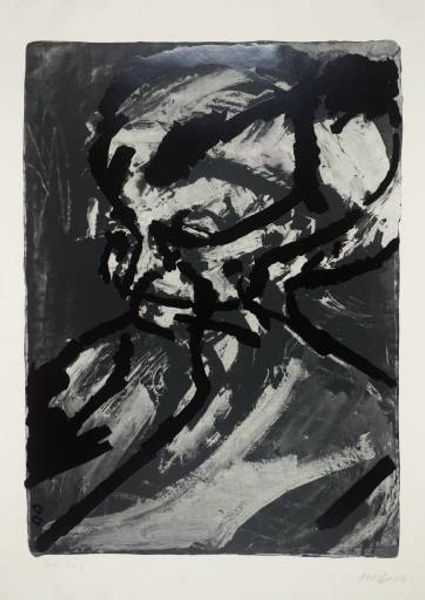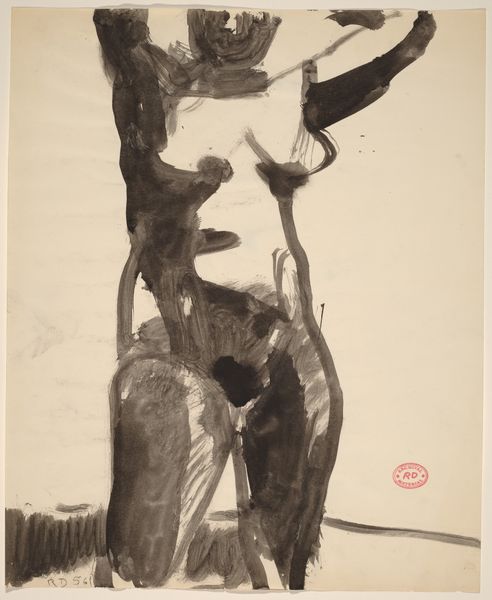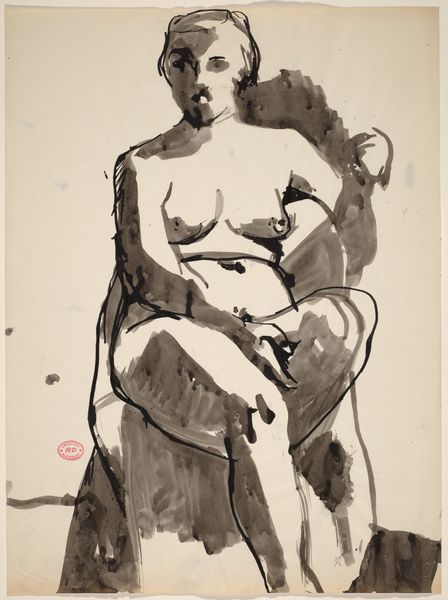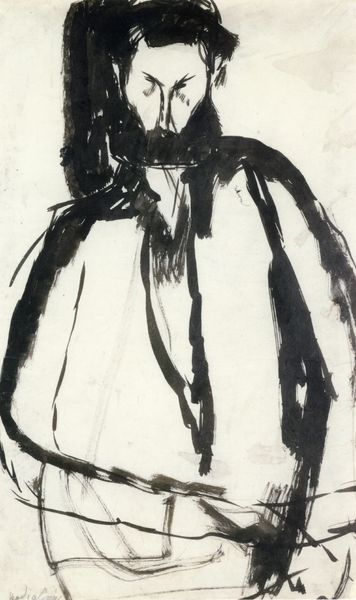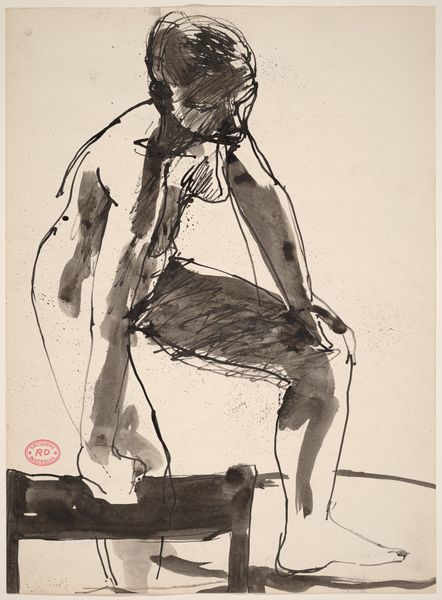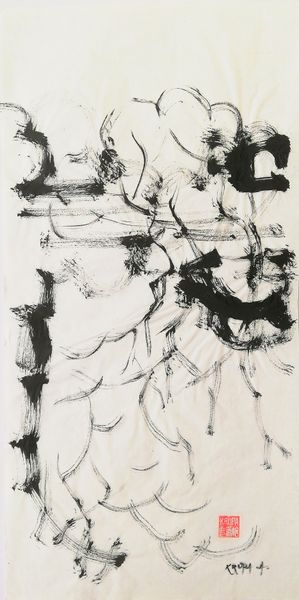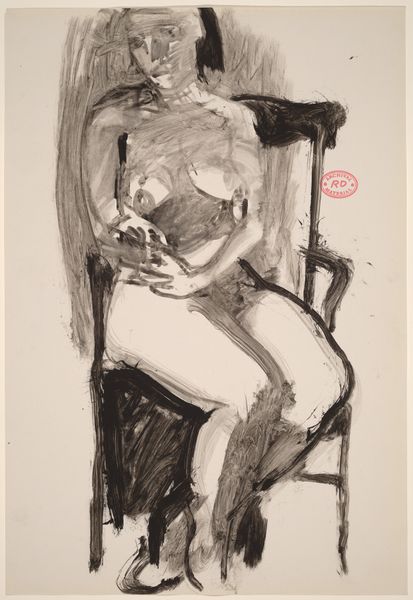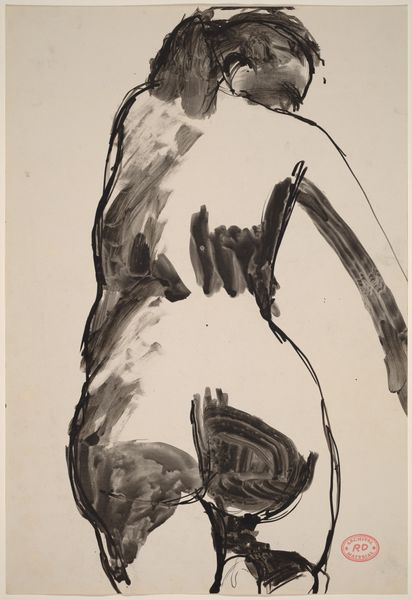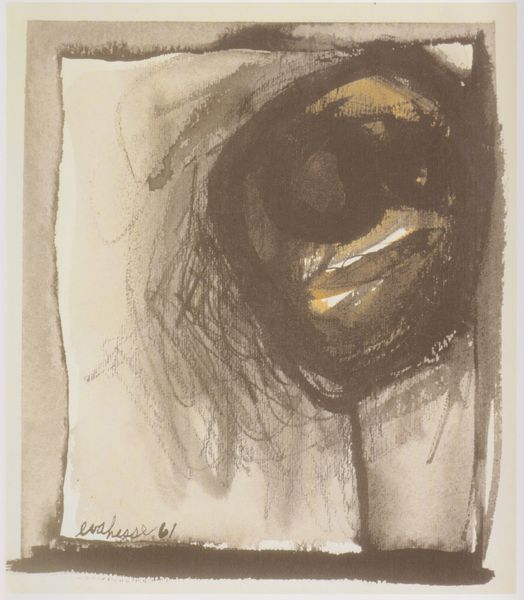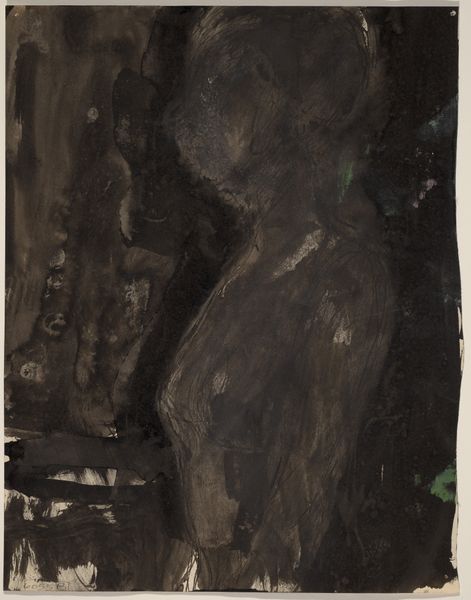![Untitled [abstraction] by Richard Diebenkorn](/_next/image?url=https%3A%2F%2Fd2w8kbdekdi1gv.cloudfront.net%2FeyJidWNrZXQiOiAiYXJ0ZXJhLWltYWdlcy1idWNrZXQiLCAia2V5IjogImFydHdvcmtzLzFmMThjOGIzLWE1MjAtNGM5Zi04NzY2LTZjYzczYjhlYTI0ZC8xZjE4YzhiMy1hNTIwLTRjOWYtODc2Ni02Y2M3M2I4ZWEyNGRfZnVsbC5qcGciLCAiZWRpdHMiOiB7InJlc2l6ZSI6IHsid2lkdGgiOiAxOTIwLCAiaGVpZ2h0IjogMTkyMCwgImZpdCI6ICJpbnNpZGUifX19&w=3840&q=75)
#
bay-area-figurative-movement
Dimensions: overall: 35.2 x 30.5 cm (13 7/8 x 12 in.)
Copyright: National Gallery of Art: CC0 1.0
Curator: This is an untitled abstraction by Richard Diebenkorn, made sometime between 1955 and 1967. It appears to be executed with ink and watercolor on paper. Editor: Stark, isn't it? That heavy black ink creates such a weighty, almost oppressive atmosphere. I'm immediately drawn to the textural variations. Curator: The composition is certainly striking. Diebenkorn's career saw a shift from abstract expressionism towards a more representational style later, but this piece, though abstract, still hints at figuration. I'm thinking about how mid-century anxieties about identity shaped abstraction. Editor: Right. But look at the materials! The fluidity of the ink allows for these quick, gestural marks. You can practically see the artist’s hand moving across the paper. Notice how the controlled application of watercolor contrasts with the wilder ink strokes—a conscious play on different properties. Curator: I agree. The use of negative space is also powerful. That tension between the heavy black and the exposed paper amplifies the sense of unease, and this abstraction, created during a period of intense social change, makes me question how artworks and public opinion can coexist. Editor: It’s like a dance between control and chance, isn’t it? The paper becomes almost sculptural. It begs questions about art production –the immediacy of it and what it demands from the viewer's labor to assemble. And even question the labour for material preparation of ink and watercolor itself. Curator: This work also highlights Diebenkorn’s engagement with the artistic movements of his time. Considering the context of the Cold War, could the heavy black also speak to a wider socio-political anxiety permeating creative circles? Editor: Possibly, but let’s not forget the tangible qualities. How Diebenkorn exploits the inherent properties of ink and watercolor demonstrates his understanding and facility for making materials express meaning beyond representation. The means themselves deliver the content. Curator: I see it. It does invite us to contemplate not just the meaning of abstraction, but the broader cultural significance of artistic choices within a turbulent period of history. Editor: It's true. By looking closely at both intention and means, we discover richer readings, revealing both material intelligence and expressive power, opening possibilities to see abstraction within reach.
Comments
No comments
Be the first to comment and join the conversation on the ultimate creative platform.
